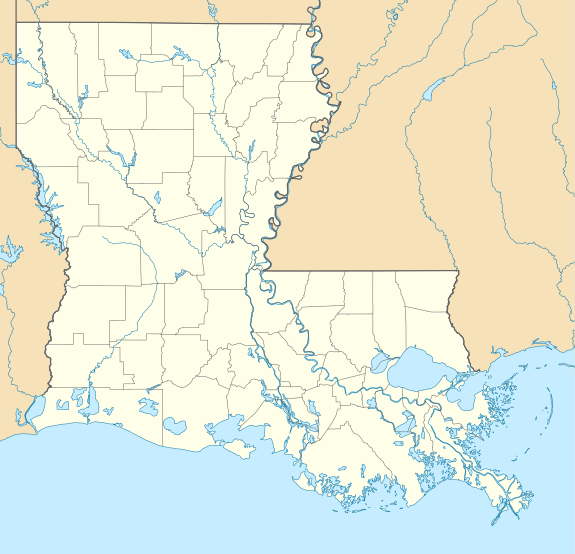Chalmette National Cemetery
Chalmette National Cemetery is a United States National Cemetery located within Jean Lafitte National Historical Park and Preserve in Chalmette, Louisiana. The cemetery is a 17.5-acre (7.1 ha) graveyard adjacent to the site that was once the battleground of the Battle of New Orleans, at the end of the War of 1812.
 Graves at the cemetery | |
| Details | |
|---|---|
| Location | |
| Country | United States |
| Type | United States National Cemetery |
| Size | 17.5-acre (7.1 ha) |
| No. of graves | 15,300 |
| Website | Chalmette National Cemetery |
Chalmette Unit of Jean Lafitte National Historical Park Historic District | |
  | |
| Nearest city | New Orleans, Louisiana |
| Coordinates | 29°56′39″N 89°59′12″W |
| Area | 142.9 acres (57.8 ha) |
| Built | 1814 |
| NRHP reference No. | 66000889[1] |
| Added to NRHP | October 15, 1966 |
Though now closed to new interments, it is the final resting place of over 15,300 veterans and casualties of American military campaigns from the Civil War to the Vietnam War. There are only four graves of War of 1812 soldiers, one of whom was at the Battle of New Orleans.
Otherwise, this cemetery has only one British seaman of Royal Navy war dead burial in World War II.[2][3]
History
Though used as a burial ground earlier, Chalmette, then known as Monument Cemetery, was established as a National Cemetery in 1864 as a place to inter the Union troops. Some Confederate soldiers were buried there, but were moved to the now defunct Cypress Grove #2 by the Ladies of the Benevolent Association of New Orleans. After the war, makeshift battlefield burial plots around the state had their interments moved to the more permanent national cemeteries. The remains of nearly 12,000 soldiers were moved to Chalmette.
As part of the Chalmette National Historical Park, the cemetery was transferred to the stewardship of the National Park Service in 1933. The cemetery and battlefield were listed on the National Register of Historic Places on October 15, 1966.
Chalmette National Cemetery suffered considerable damage in 2005's Hurricane Katrina, with the toppling of headstones and much of the perimeter wall. The days/hours the park was open to the public were limited, for a few years afterward.
 Old trees along Military Cemetery Road
Old trees along Military Cemetery Road Two graves of US Colored Troops (USCT)
Two graves of US Colored Troops (USCT)
References
External links
| Wikimedia Commons has media related to Chalmette National Cemetery. |